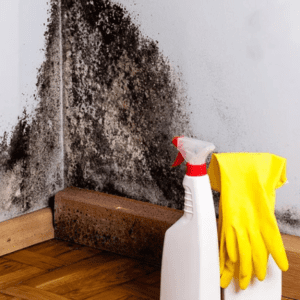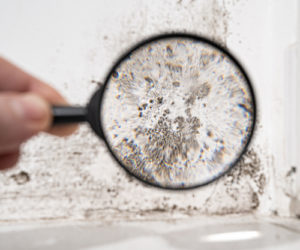Testing Air Quality After Mold Remediation
Testing Air Quality After Mold Remediation
Blog Article
Your Ultimate Guide to Article Mold And Mildew Remediation Techniques
Navigating the realm of post-mold remediation techniques is a thorough process that requires interest to detail and an extensive understanding of the details entailed. In the consequences of mold problem, recognizing just how to efficiently remove the mold and mildew and avoid its reoccurrence is critical for preserving a healthy and balanced indoor atmosphere. From choosing the appropriate cleaning and sanitizing methods to applying methods for long-term mold avoidance, each step in the removal trip plays a vital function in ensuring a successful outcome. As we embark on this exploration of post-mold removal strategies, we will certainly discover the vital techniques and ideal techniques that can assist you recover your area to its pre-mold condition and safeguard it against future mold and mildew threats.
Understanding Post-Mold Remediation Refine
After completing the mold remediation process, it is vital to understand the post-mold removal strategies that are necessary to make sure a efficient and detailed cleanup. As soon as the mold has been removed, the following step entails cleansing and decontaminating the affected locations to stop any kind of regrowth of mold. This consists of utilizing specialized cleansing agents to wipe down surfaces and kill any type of continuing to be mold spores. It is important to dry out the area entirely to dissuade the development of mold in the future (Post Mold remediation cleaning). Appropriate air flow and dehumidification can help in this process.
In addition, performing a final assessment post-remediation is essential to make certain that all mold and mildew has been efficiently gotten rid of. If the examination reveals any lingering mold and mildew, added removal might be required.
Effective Cleaning Up and Decontaminating Approaches

Stopping Future Mold And Mildew Growth

Significance of Correct Ventilation
Correct ventilation plays a vital role in preventing dampness buildup, a vital consider mold and mildew growth within indoor settings. Reliable ventilation systems help eliminate excess humidity from the air, lowering the opportunities of mold spores finding the moisture they require to germinate and spread out. Without adequate air flow, interior areas can come to be a reproduction ground for mold, bring about possible health dangers and structural damages.
By ensuring correct air flow, air flow systems can additionally aid in drying wet locations faster after water damages or flooding events, additionally deterring mold development. testing air quality after mold remediation. Precede like restrooms, kitchen areas, attics, and basements where wetness levels often tend to be higher, installing and preserving efficient ventilation systems is vital in avoiding mold and mildew invasions

Monitoring and Upkeep Tips
Offered the vital role that correct air flow plays in preventing mold and mildew development, it is vital to develop reliable monitoring and upkeep ideas to ensure the ongoing functionality of air flow systems. Tracking moisture levels within the home is also essential, as high moisture can contribute to mold growth. By remaining mindful and positive to the problem of ventilation systems, property owners can efficiently minimize the danger of mold regrowth and keep a healthy indoor atmosphere.
Conclusion
To conclude, post-mold removal strategies are necessary for ensuring a clean and risk-free atmosphere. Recognizing the procedure, carrying out effective cleansing and decontaminating techniques, preventing future mold and mildew development, keeping appropriate ventilation, and routine monitoring are all essential action in the removal process. By following these guidelines, you can successfully eliminate mold and mildew and avoid its return, functioning or advertising a healthy living area for all residents.
In the after-effects of mold and mildew infestation, knowing how to properly eradicate the mold and avoid its reoccurrence is vital for keeping a healthy and balanced interior setting. As soon as the mold has been removed, the following step entails cleaning and sanitizing the impacted locations to avoid any type of regrowth of mold - After mold remediation. After getting rid of noticeable mold and mildew growth, it is essential to clean all surface areas in the damaged area to eliminate any type of staying mold and mildew spores. To even more boost mold prevention steps, it is necessary to attend to underlying problems that originally led to mold and mildew advancement.Offered the crucial role that proper ventilation plays in stopping mold development, it is critical to develop effective monitoring and upkeep pointers to make sure the continued performance of air flow systems
Report this page